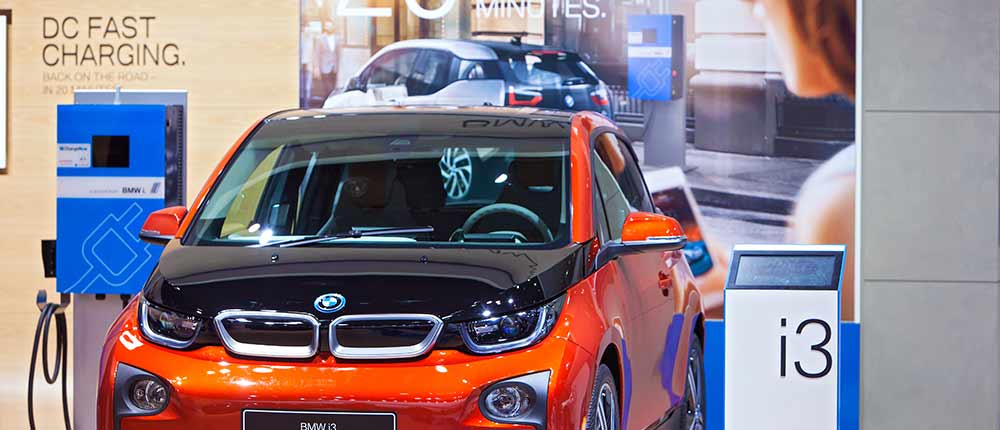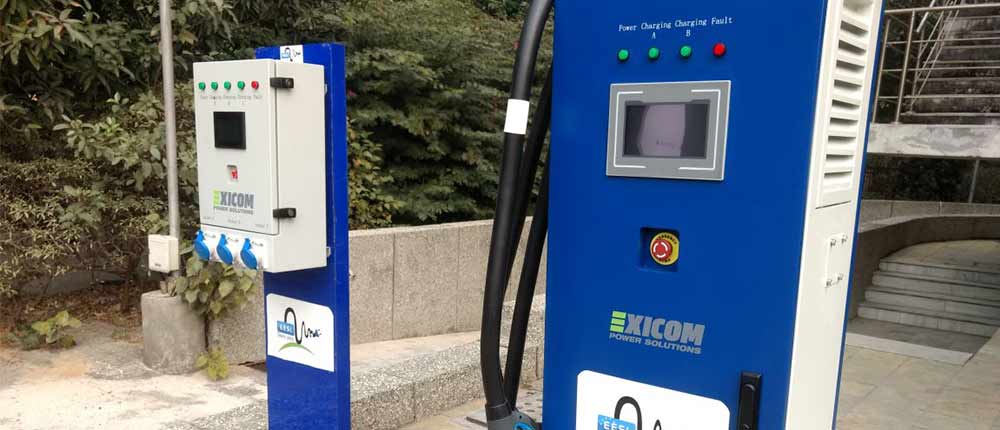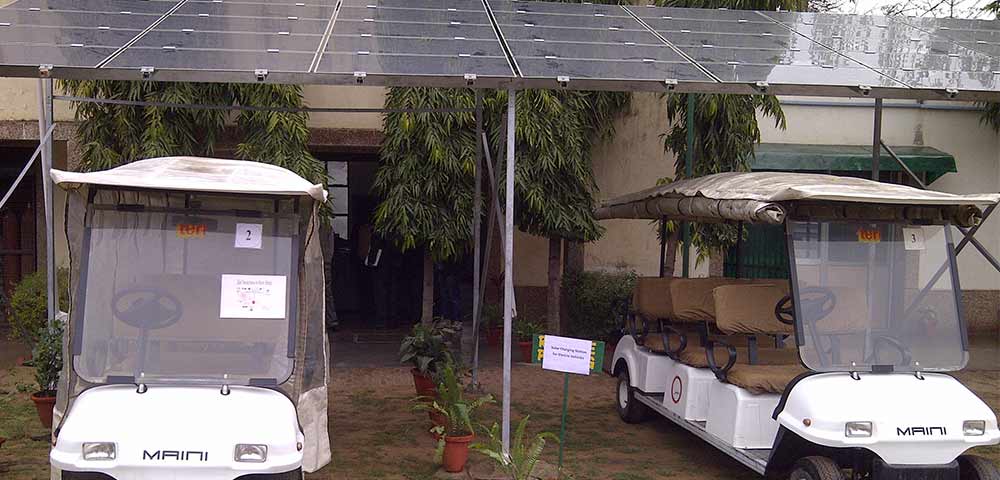Charging stations for EVs can help drive demand for the sector's growth in the country

The share of electric vehicles (EVs) in the Indian transport sector is increasing with the National Electric Mobility Mission Plan (NEMMP), 2013, and the Faster Adoption and Manufacturing of Hybrid & Electric Vehicles (FAME) scheme, 2015. The NEMMP aims to achieve national fuel security by promoting hybrid and electric vehicles in the country. It has set the target of sales of 6-7 million hybrid vehicles and EVs year on year from 2020 onwards. FAME aims to support development of a market and a manufacturing eco-system for hybrid/electric vehicles by focusing on technology development, demand creation, pilot projects, and charging infrastructure.
Together, the two aim to increase the share of EVs in India's total vehicle sales to 40 per cent by 2030. However, the growth is at a slower rate than expected, mainly due to anxiety about charging in the face of lack of sufficient charging stations. Private players are reluctant to invest in creating and operating such stations as they do not foresee much revenue due to low EV usage at present.
Creating a charging infrastructure
To address this, the Central government has proposed that the Union ministry of Power, in consultation with the Niti Aayog and state governments, create a ‘minimum skeleton network' of charging infrastructure throughout the country. The around 4,000 charging stations intended under this would constitute only one per cent of the total charging stations projected to be needed by the end of 2030. This is meant to encourage the use of EVs and create enough demand to attract other players to set up charging stations, thus creating a bigger market for EVs in the near future.
In the past year, the power ministry has proposed several regulatory interventions in this direction. These include treating EV charging as a ‘service' under the Electricity Act, 2003, opening of EV charging market for all, introduction of dynamic pricing with Time of Day tariff (differential electricity tariffs for different times of the day keeping in mind peak and non-peak hours), standardisation of charging infrastructure both for alternating current (AC) and direct current (DC) chargers, etc.
Estimating the minimum skeleton network
Learning from the interventions made by leading countries in the EV sector, the Union government is planning to roll out a strategy, initially for chosen metros and major highways, with support from the FAME-II scheme. It will be extended to other cities with a million plus population and other highways later.
Based on Census of India 2011 data, there are nine metros – Greater Mumbai, Delhi-NCR, Kolkata, Chennai, Bengaluru, Hyderabad, Ahmedabad, Pune, and Surat – with population over four million. It is proposed to install at least one high-capacity charging station at every 3-5 km in these cities. The largest of these, Delhi-NCR, covers approximately 3,603 square kilometers (sq. km.), thereby requiring 401 charging stations, the maximum amongst all cities.
For select highways connecting metros, two sets of charging stations are proposed on either side of the road, every 25 km. These highways are – the Mumbai-Pune Expressway, Ahmedabad-Vadodara Expressway, Yamuna Expressway (Delhi to Agra), Delhi-Jaipur, Bengaluru-Mysore, Bengaluru-Chennai, and Surat-Mumbai expressways. The last of these, at 250 km, is the longest and requires 40 charging stations, the most amongst these highways.
Standardisation of chargers

The proposed charging stations would consist of -
- One fast DC high-power charging point (50 kW) to comply with the Combined Charging System (CCS), which is an open and universal standard
- One CHAdeMO connector (50 kW), which is a Japanese standard for high-power DC charging
- Two Type-2 AC charging points (22 and 43 kW)
- One AC-001 (3.3 kW, slow charging) and DC-001 (15 kW) charging point as per Bharat EV charger specifications (which are currently being implemented by EESL)
To achieve standardisation of charging infrastructure in the country, the government has proposed that Energy Efficiency Services Limited (EESL) be designated as the aggregator for bulk procurement of public chargers, and other entities act as nodal agencies responsible for setting up and maintaining them using a capital grant by the Union government, available under FAME-II. Nodal agencies are supposed to submit their EV charging infrastructure deployment plan, including location of charging stations for their respective cities/highways, to the Centre. The Central Sanctioning & Monitoring Committee (CSMC) and State-Level Monitoring Committees (SLMC) are also proposed to facilitate the implementation and post-implementation phases of the scheme.
Under FAME-II, a capital grant of Rs. 1,057 crore is planned to create the minimum skeleton network of 4,230 public charging stations in 53 cities with a million plus population, and on major highways across the nation.
A step like this could accelerate EV acceptance and create a market for EVs and related infrastructure. Large-scale penetration of EVs will also be beneficial for grid operators to manage the high variable renewable energy-mix transition in the Indian electricity sector.
EVs as virtual power plants (VPP) and integrating renewable energy in EV charging

India's electricity sector is going through a transition as India has set itself a renewable energy target of generating 175 GW by 2022, 275 GW by 2027 (NEP), and approximately 350 GW by 2030 (ETC India). As EVs are meant to decarbonise the Indian transportation sector by reducing dependence on petrol and diesel, the area provides an untapped opportunity to manage the intermittent nature of supply of renewables such as solar power.
While the supply may be intermittent, according to an internal study by TERI, EV power demand would be variable too. Seeing EVs as not just vehicles but also as virtual power plants (VPPs) that are a mobile power storage mechanism could help. For this, two important concepts are - Grid-to-Vehicle (G2V), which is the charging of an EV using electricity from the grid; and Vehicle-to-Grid (V2G), which is when the electricity stored in a parked vehicle (for e.g., parked in an office or, at home after hours) is fed back to the grid.
TERI's internal study simulated a V2G and G2V model for a typical summer day in Delhi, in order to promote peak shaving/shifting through time-of-day/differential tariff mechanism, demand response (DR) and demand side management (DSM), integration of solar rooftop, and emergency back-up applications. The study shows that an EV can be used to supply power to the grid (V2G) from its storage during peak hours (mainly for afternoon and night peaks/AC loads), and be charged back from the grid (G2V) during off-peak hours or when output from solar radiation is maximum so that vehicle runs (VR) when required. The findings are depicted below:
In an aggregated model such as this, charging stations and EVs (with their mobile batteries) would save on high storage costs (mainly to avoid stationary battery energy storage), the Time of Day (ToD) tariff will help manage peak hour demand and vehicle owners could be given financial incentive to give power back to the grid.
Such a model would also be a step towards achieving India's multiple goals such as higher grid integration of renewables, fuel security brought out by larger penetration of EVs, and a transition to low-carbon pathway for growth.

